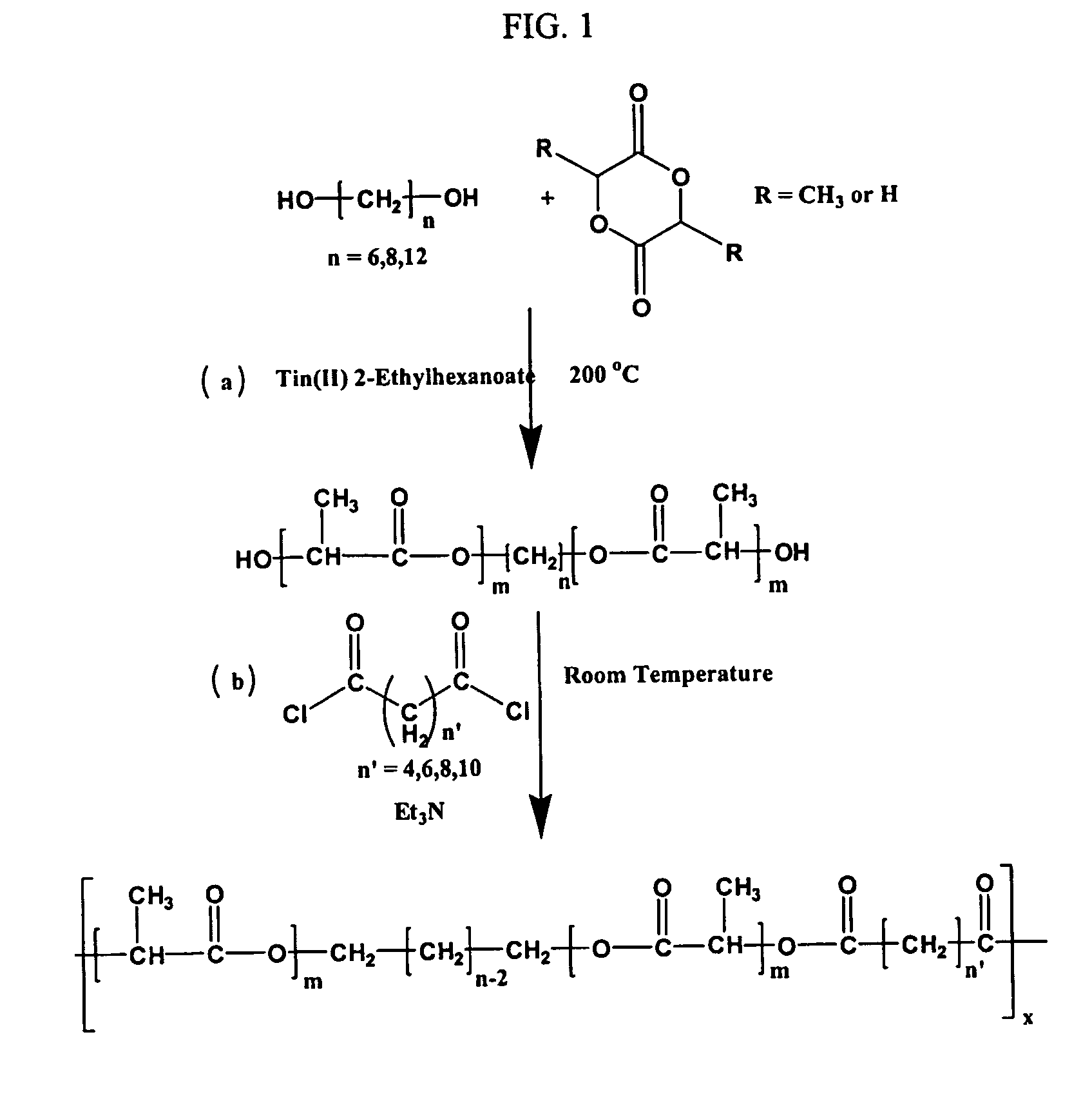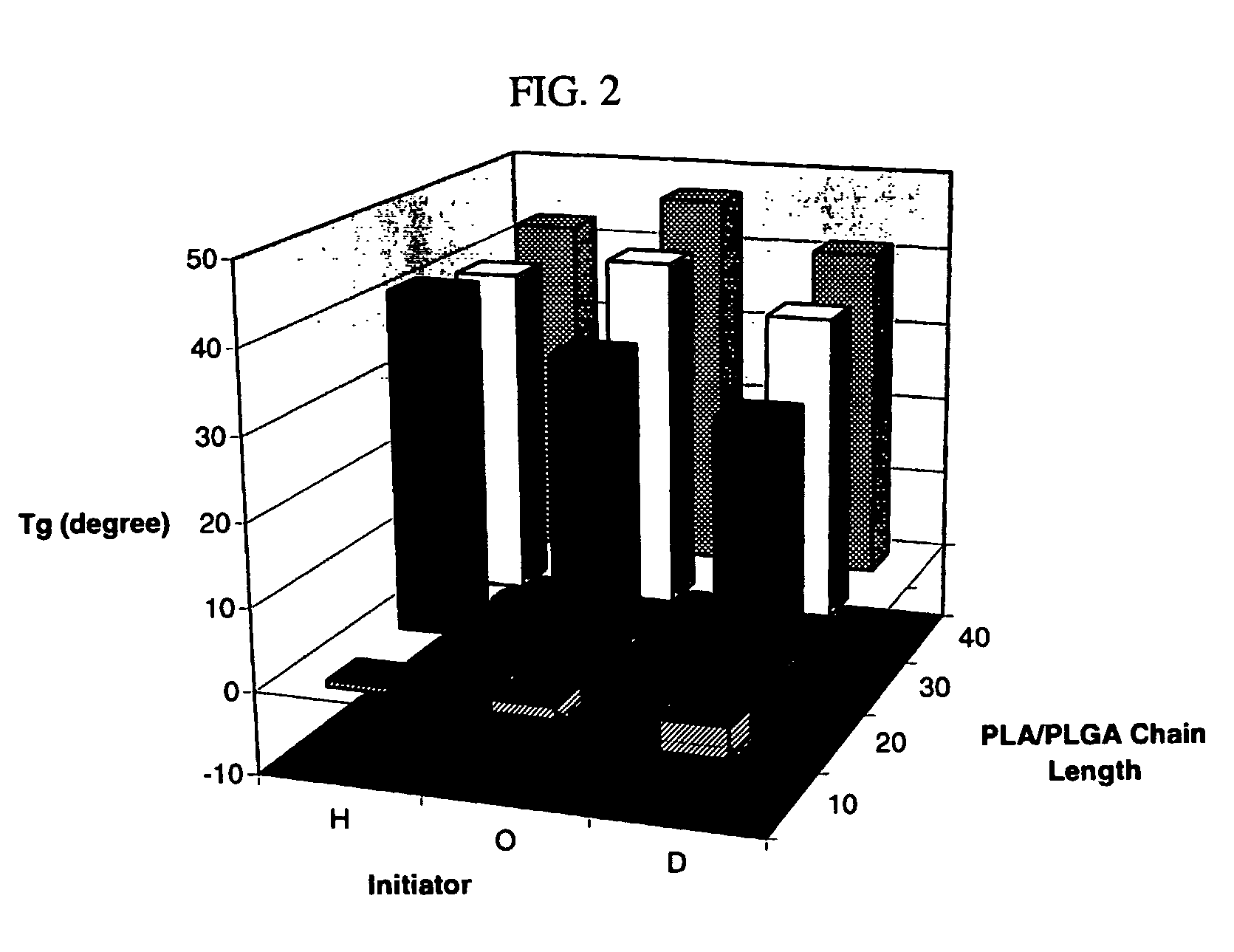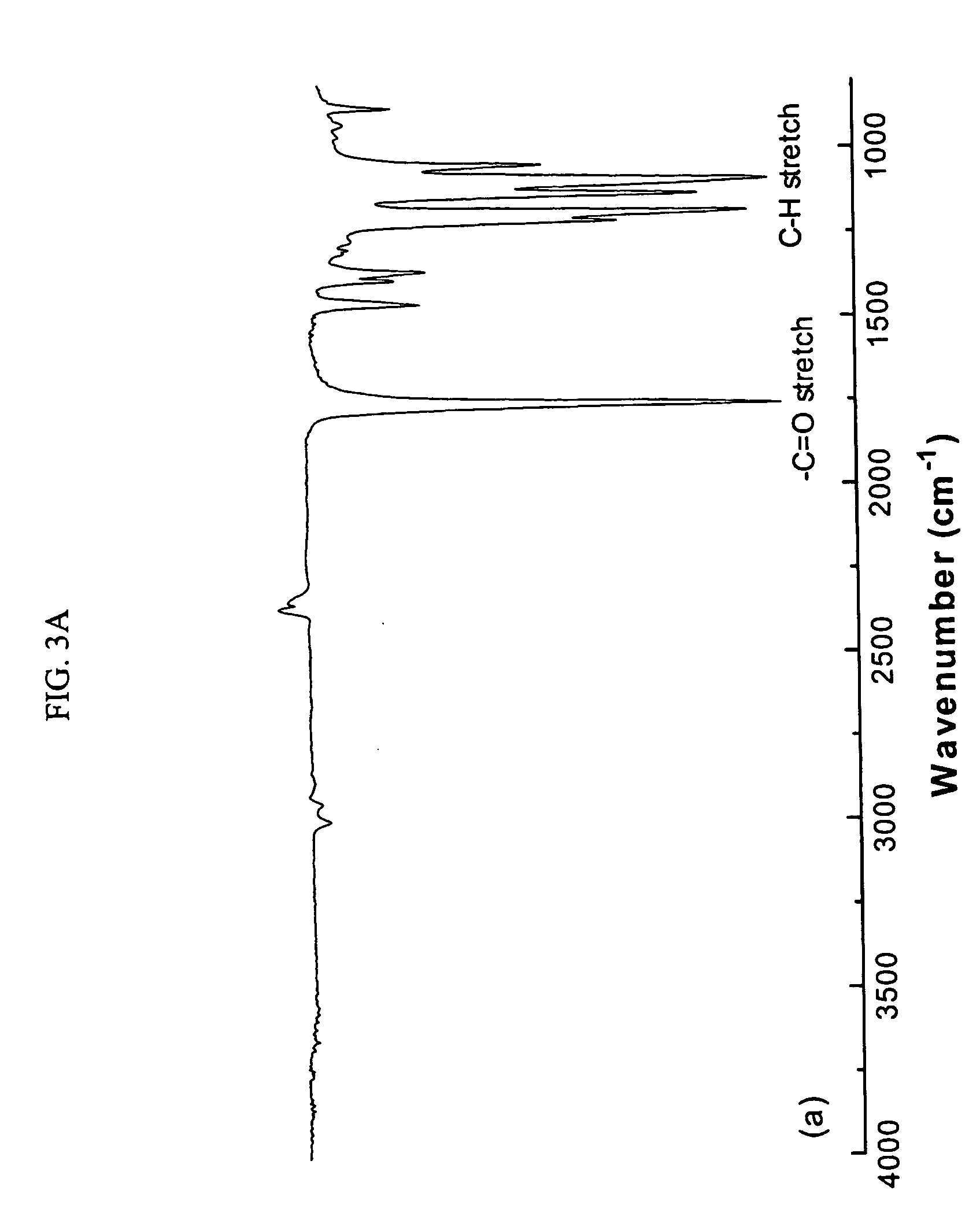Novel polyesters
a technology of polyester and polyester, applied in the direction of medical preparations, pharmaceutical non-active ingredients, pharmaceutical delivery mechanisms, etc., can solve the problems of non-linearity in degradation and drug release, unstable changes in mechanical properties, and bulk porosity
- Summary
- Abstract
- Description
- Claims
- Application Information
AI Technical Summary
Benefits of technology
Problems solved by technology
Method used
Image
Examples
example 1
Synthesis of Macromerdiols (MDs)
[0084] A series of MDs composed of various initiating cores (C6, C8, C10, and C12) and L-lactide or L-lactide / glycolide chain length (m=10, 20, 30 and 40) were prepared (Table 1). As an example, the synthesis of MD of 1,6-hexanediol with L-lactide is described below. A 50-mL round-bottomed flask was charged with 0.409 g of 1,6-hexanediol, 10 g of L-lactide (20 mol of L-lactide / mol of diol), 21 mg of Tin(II) 2-ethylhexanoate, and 2 mL of methylene chloride (MeCl), and the reaction mixture was melted by heating to 90° C. After most of the solvent was evaporated, the system was then stirred under vacuum at 200° C. for 5 h and then cooled to room temperature (RT) under slow stirring. The resulting MD was dissolved in MeCl, precipitated in anhydrous ether, filtered, and dried (yield 90%).
[0085] The reaction is shown in FIG. 1 as the step (a). Some representative MDs synthesized in this study are shown in Table 1 below.
[0086] MDs were readily soluble in ...
example 2
Synthesis of Surface-Eroding Polyesters
[0087] The MDs (synthesized a described in Example 2) were linked using hydrophobic diacid dichlorides of varying carbon length (C6, C8, C10, and C12) to form higher molecular weight (MW) polyesters. The synthesis of polyesters derived from MDs with adipoyl chloride is described below. 3 g of the MD was dissolved in 40 mL of MeCl in a 100-mL round-bottom flask. To this solution, 0.55 g of adipoyl chloride was added drop-wise at RT. After about 1 h, 0.61 g of triethylamine was added drop-wise to the flask, and the contents of the flask were stirred for an additional 4 h at RT. The reaction mixture was then washed with 100 mL of semi-saturated sodium bicarbonate and the organic MeCl phase was separated. The MeCl phase was dried with anhydrous sodium sulfate and filtered to yield a yellow colored solution. The polymer was obtained by precipitating in a large excess of hexanes and purified by re-precipitation from MeCl in hexanes. The fibrous soli...
example 3
Characterization of MDs and Polyesters
[0088] The MDs and polymers derived there from were characterized using FTIR, 1H and 13C NMR and gel permeation chromatography (GPC). Results are presented in Tables 1-4 and FIGS. 2-4B and 6A-10C. The purity of the MD was verified using 1H—13C correlation spectroscopy prior to the coupling step. The thermal transitions in the MD and polymers were determined using modulated DSC. Polymer films were prepared by spin coating on ultrasonically cleaned glass slides, and their surface morphologies were mapped using atomic force microscopy (AFM) in the tapping mode. The physical characteristics of the polymer wafer (surface and cross-sectional) before and after degradation were analyzed using scanning electron microscopy (SEM).
[0089] Surface eroding polyesters were obtained by condensation polymerization, by linking the MDs using a variety of hydrophobic diacid dichlorides as shown in FIG. 1, step (b). Similarly to the MDs, corresponding polyesters we...
PUM
| Property | Measurement | Unit |
|---|---|---|
| Fraction | aaaaa | aaaaa |
| Fraction | aaaaa | aaaaa |
| Fraction | aaaaa | aaaaa |
Abstract
Description
Claims
Application Information
 Login to View More
Login to View More - R&D
- Intellectual Property
- Life Sciences
- Materials
- Tech Scout
- Unparalleled Data Quality
- Higher Quality Content
- 60% Fewer Hallucinations
Browse by: Latest US Patents, China's latest patents, Technical Efficacy Thesaurus, Application Domain, Technology Topic, Popular Technical Reports.
© 2025 PatSnap. All rights reserved.Legal|Privacy policy|Modern Slavery Act Transparency Statement|Sitemap|About US| Contact US: help@patsnap.com



